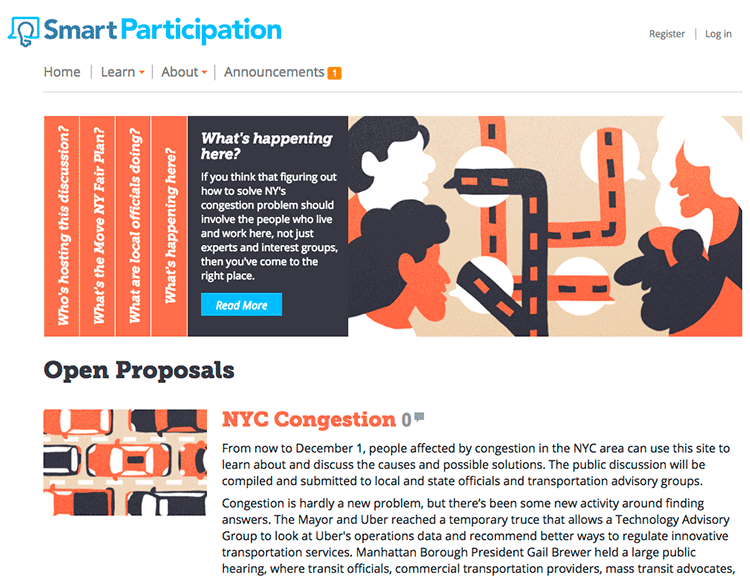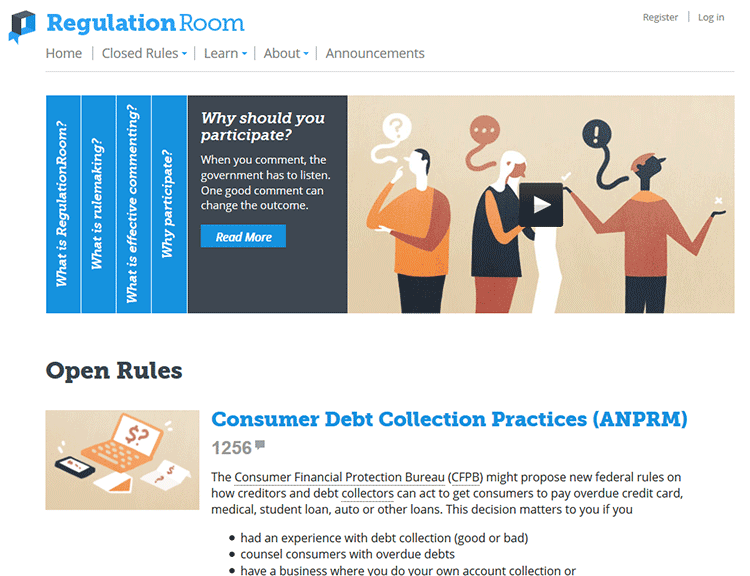SmartParticipation
A robust and well tested
Drupal-based platform
- Reliably handles high volume of participant traffic
- Easy content authoring, dependable performance and excellent security
- Performance tested in live nationwide public policy discussions
An innovative public
deliberation interface
- Novel design puts relevant policy info where participants will see it
- Targeted commenting focuses, and organizes, discussion
- Unique moderator interface enables online facilitation, if desired
Experience-tested setup
and operating advice
- Detailed manual available for setting up new discussions
- Sandbox Environment explains design elements as well as allowing trial set-up
- Other literature offers in-depth advice on all aspects of getting informed, broadly participatory public discussion
SmartParticipation is an open source e-participation platform based on Drupal and designed to offer an effective and adaptable environment for informed online discussion. Developed by CeRI, a cross-disciplinary group of Cornell University researchers.
Take a test drive in the
SandboxEnvironment
View the Platform in Action
powered by SmartParticipation
SmartParticipation
SmartParticipation can be readily adapted to many settings where informed and thoughtful public input is needed. In 2015-16, the platform was used to host a two-stage discussion of New York City’s traffic congestion problems. Stage 1 was a fairly open-ended discussion of causes and possible solutions. Stage 2 focused participants’ attention on a lengthy and detailed bill, introduced in the New York Assembly, that proposed an ambitious (and controversial) plan to tackle multiple transportation challenges facing the City and surrounding communities.
Visit NYC @ SmartParticipationRegulationRoom
RegulationRoom was the original application of the SmartParticipation platform, developed and used in the setting of notice-and-comment rulemaking by federal agencies. In the complex policy environment of new federal safety and consumer protection regulations, RegulationRoom enabled historically silent stakeholder groups to participate effectively in six actual rulemakings. Rulemakers and participants both agreed that the agency got better and more complete information about the problems it was trying to solve, while participants got a better understanding of the process, the competing interests, and the agency’s objectives.
Visit RegulationRoom


